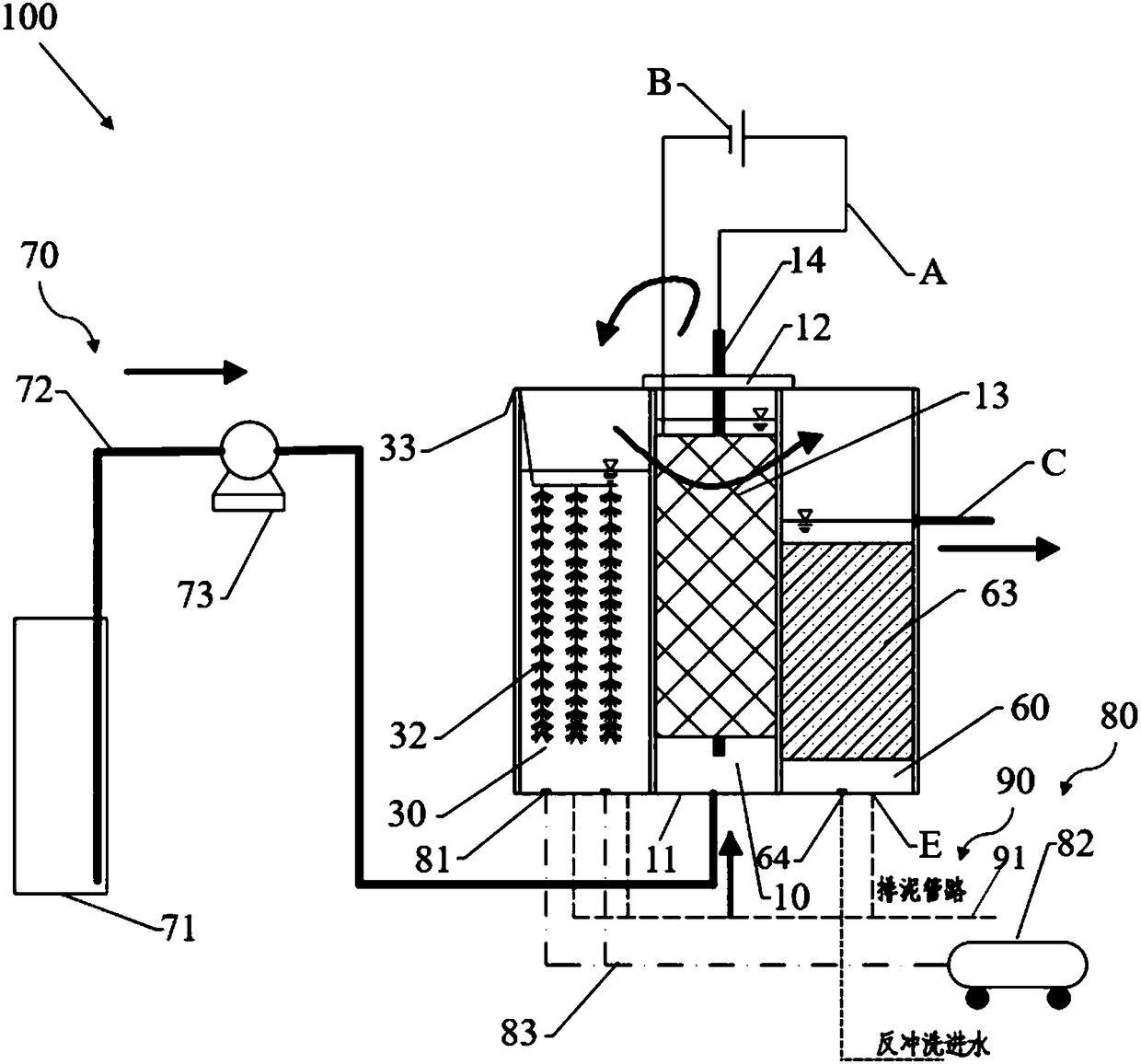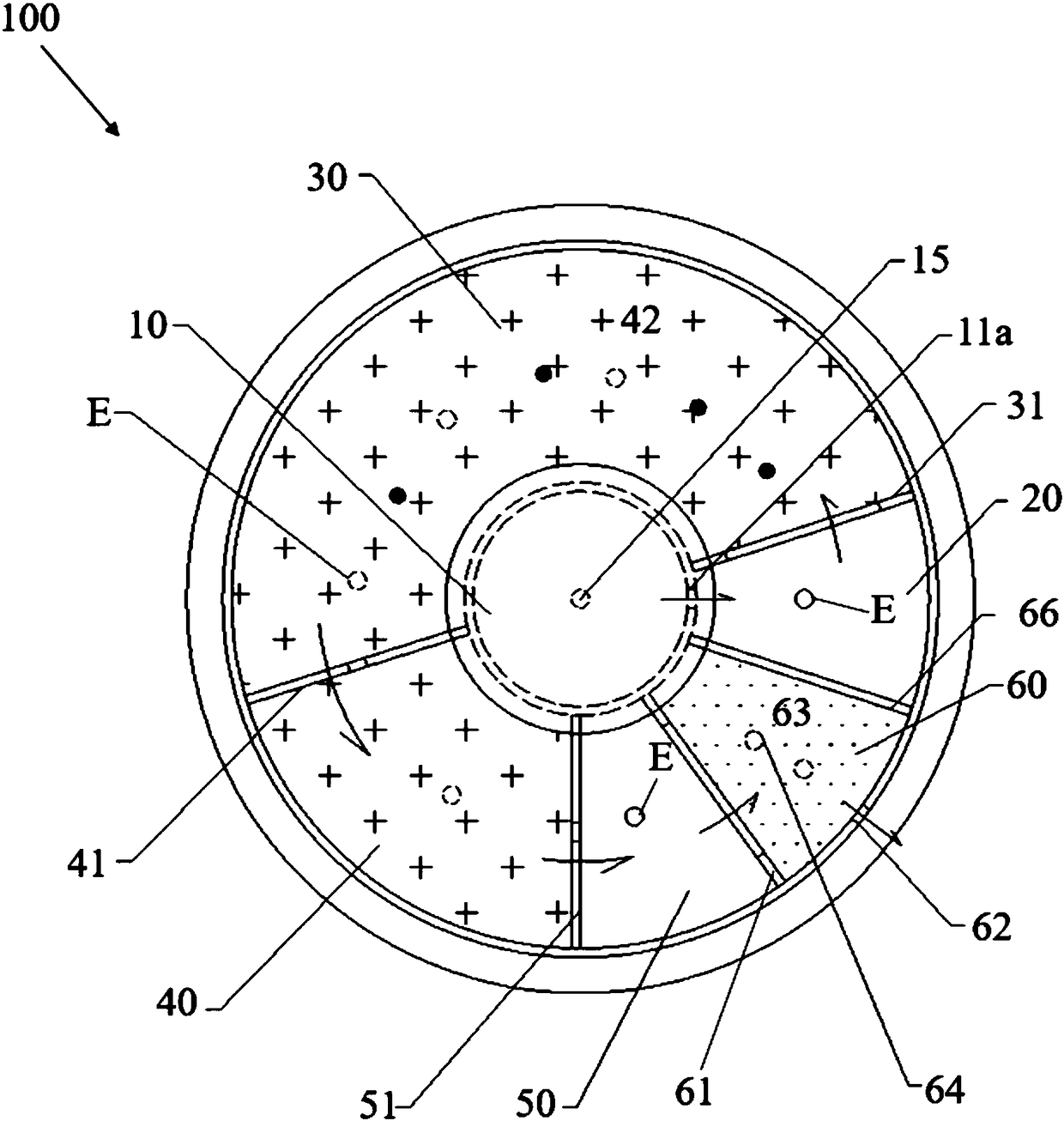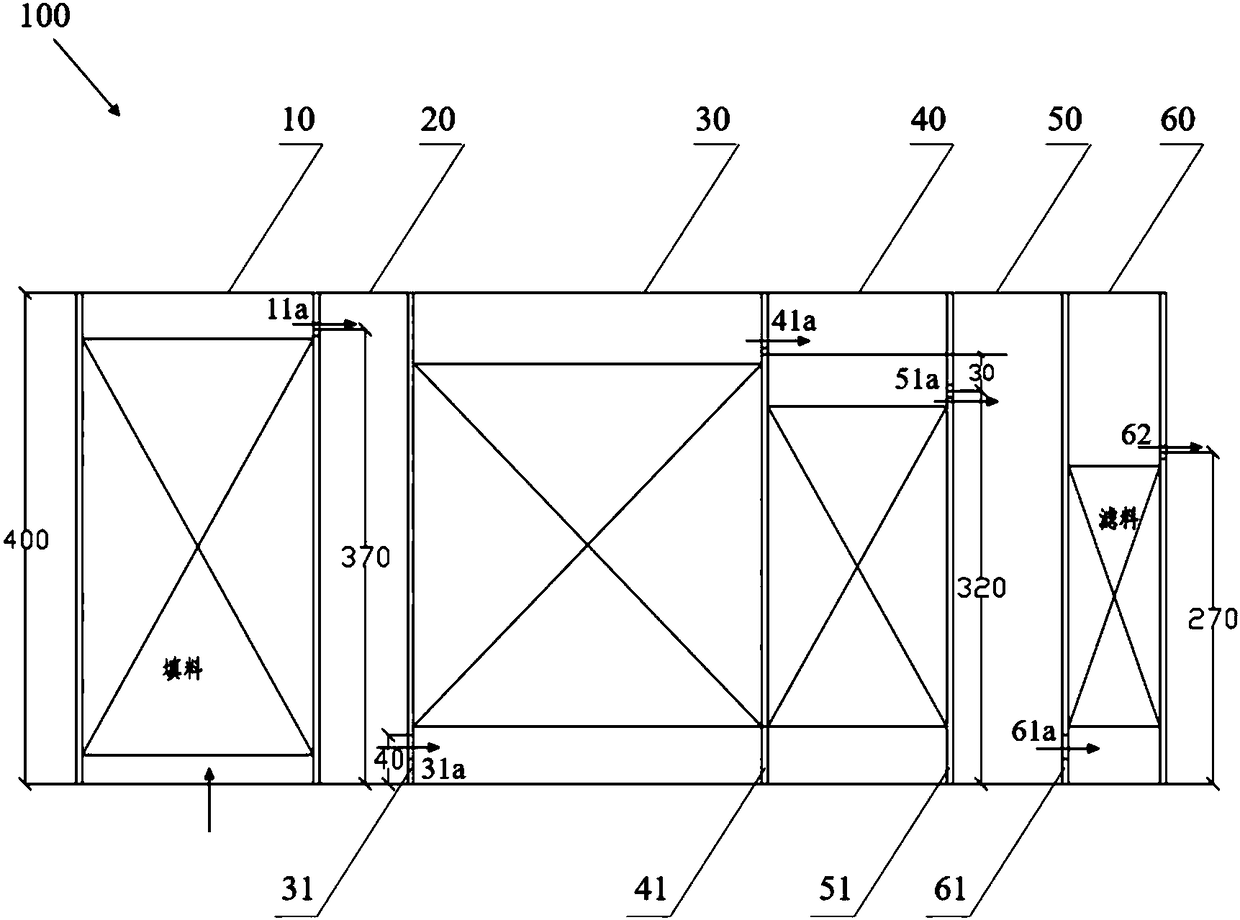Bioelectrocatalysis coupled contact oxidation denitrification filtration integrated bio-reactor
A bioreactor, contact oxidation technology, applied in electrochemical biocombination treatment, filtration treatment, chemical instruments and methods, etc., can solve the problem that it is difficult to completely remove pollutants from printing and dyeing wastewater, the biodegradability of printing and dyeing wastewater is low, and it is difficult to achieve effluent quality. Standard and other issues, to achieve the effect of reducing the burden of sludge treatment, low sludge yield and simple structure
- Summary
- Abstract
- Description
- Claims
- Application Information
AI Technical Summary
Problems solved by technology
Method used
Image
Examples
Embodiment Construction
[0030] The bioelectrocatalytic coupled contact oxidation denitrification filtration integrated bioreactor involved in the present invention will be described in detail below with reference to the accompanying drawings.
[0031]
[0032] Such as figure 1 and 2 As shown, the integrated bioreactor 100 of bioelectrocatalysis coupling contact oxidation denitrification filtration has: bioelectrocatalysis cell 10, first water collection pool 20, contact oxidation pool 30, denitrification pool 40, second water collection pool 50, filter Pool 60 , water inlet part 70 , aeration part 80 , and mud discharge part 90 .
[0033] The bio-electrocatalytic cell 10, the first water collection pool 20, the contact oxidation pool 30, the denitrification pool 40, the second water collection pool 50, and the filter pool 60 form a cylindrical structure, wherein the bio-electrocatalytic cell 10 is located in the middle as the inner area , with an inner diameter of 120mm, a wall thickness of 5mm, ...
PUM
 Login to View More
Login to View More Abstract
Description
Claims
Application Information
 Login to View More
Login to View More - R&D
- Intellectual Property
- Life Sciences
- Materials
- Tech Scout
- Unparalleled Data Quality
- Higher Quality Content
- 60% Fewer Hallucinations
Browse by: Latest US Patents, China's latest patents, Technical Efficacy Thesaurus, Application Domain, Technology Topic, Popular Technical Reports.
© 2025 PatSnap. All rights reserved.Legal|Privacy policy|Modern Slavery Act Transparency Statement|Sitemap|About US| Contact US: help@patsnap.com



